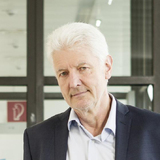The Question
Lamins are nucleoskeletal proteins forming a scaffold structure at the nuclear envelope of all metazoan cells, termed the nuclear lamina. They determine mechanical properties of the nucleus and regulate spatial chromatin organization by anchoring heterochromatin to the nuclear periphery. Over 400 mutations in the LMNA gene have been identified that cause various rare diseases, including muscular dystrophy, cardiomyopathy, lipodystrophy and premature aging. We try to understand the molecular functions of lamins in mechanosignaling and chromatin regulation at mechanistic level. This will allow us to elucidate the roles of lamins in adult stem cell regulation and tissue homeostasis and to discover lamin-linked defects during aging. We also aim at a better understanding of molecular disease mechanisms in lamin-linked diseases to foster the development of novel therapeutic and diagnostic tools for patient treatment.





